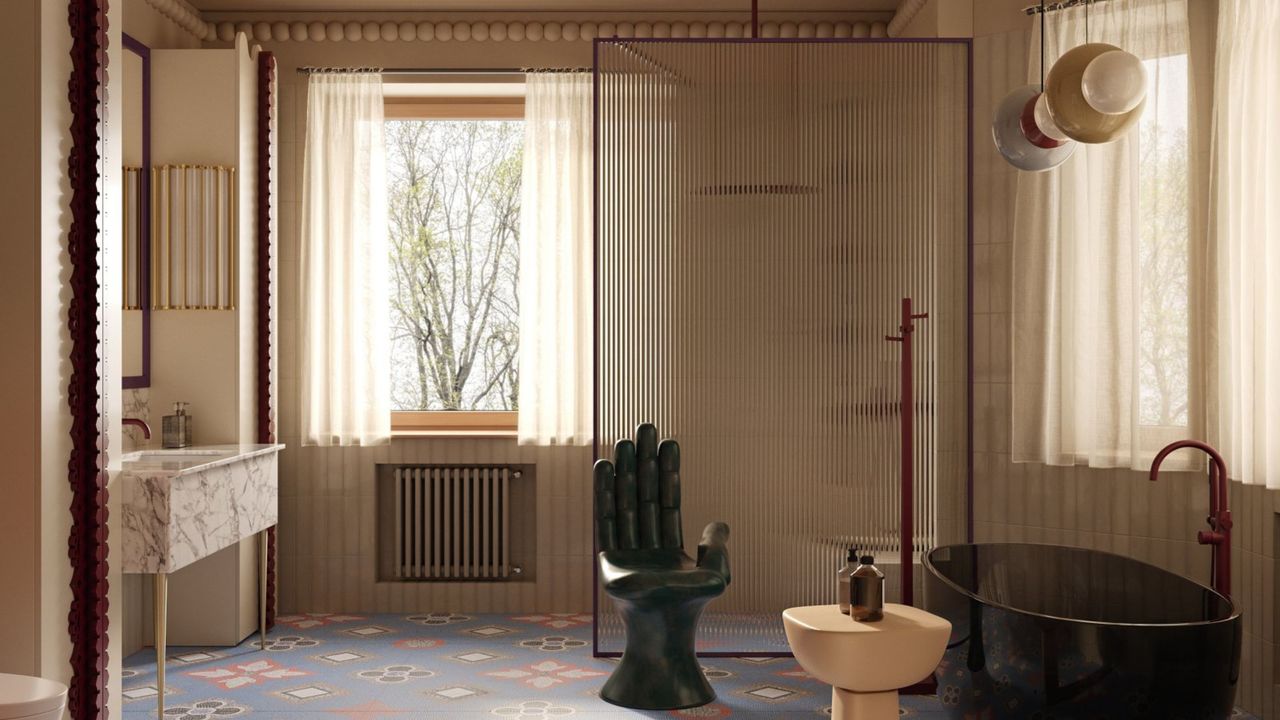
I'll be honest, I've got skin in this game. When my partner and I bought a flat in a 70s-era building (read: fairly architecture-less), I wanted to add some form of decorative cornice or ceiling trim to give the space some... something. He argued it would clash with the heritage of the building, and to be honest, a part of me agreed — begrudgingly, though.
So I decided to use my privileged position (and the fact that I get to speak to interior designers daily) to see if I could find someone who'd side with me. So I asked: 'Can you add decorative plasterwork like ceiling trims to a modern home? And perhaps more importantly — should you?'
Much to my surprise, the response was fairly resounding. "Yes." "Absolutely." "Without a doubt." It just depends on the style. "Today, it's more about a line, a graphic accent, or a texture that sets the mood," explains Evgeny Shevchenko, co-director of design studio LakeandWalls. "What matters is that it feels integrated into the design language: tied to the palette, geometry, or narrative of the space." From tiled borders to simple slicks of paint, here are the ideas I sent straight to my partner as proof that it can work.
1. Stick to a Modern Silhouette
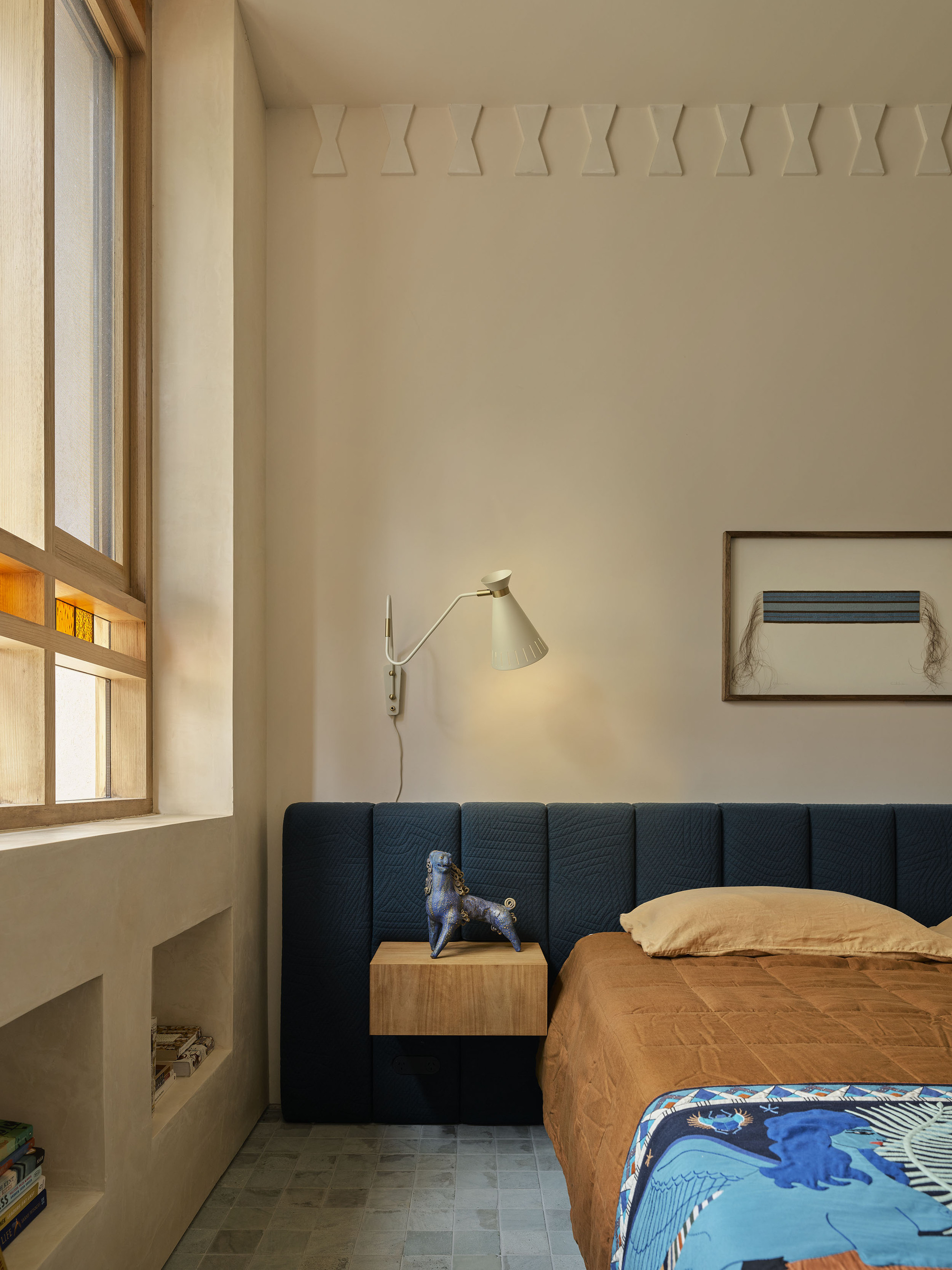
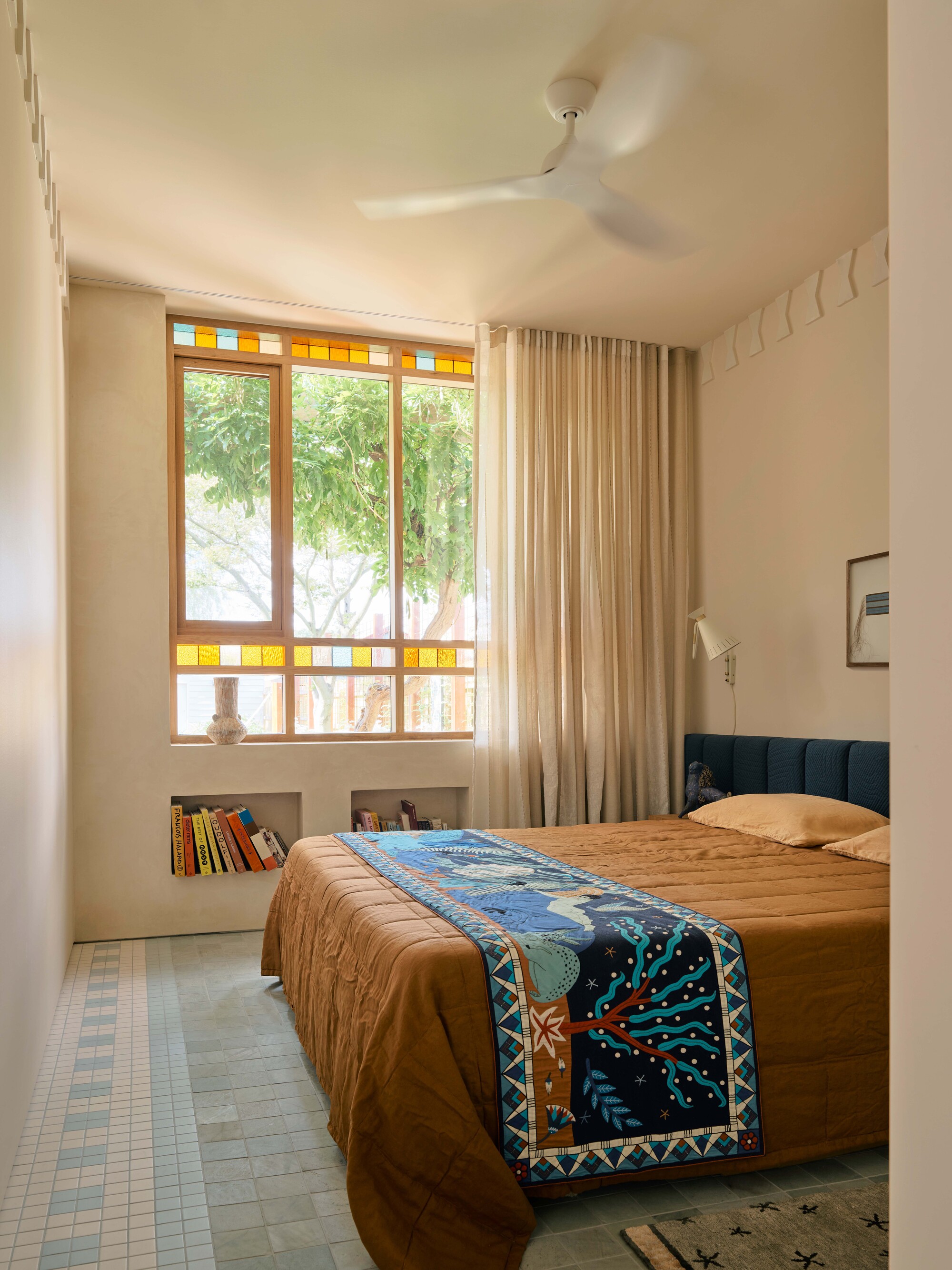
When it comes to using ceiling trims in modern spaces, the trick is silhouette. Rather than the ornate, intricate cornicing you'd see in traditional Victorian architecture, it's best to opt for a simpler, more geometric shape, like that seen in the bedroom above by YSG Studio.
The room is located within the modern rear extension of a classic Victorian weatherboard in Melbourne's Fitzroy North. "Protruding triangular and bowtie tiles line high datums within the bedroom and bathrooms, playfully complementing the original house’s timber moldings and decorative ceilings," shares the studio's principal designer and founder, Yasmine Ghoniem.
It also draws attention to the height of the space, adds interest, and nods to similar motifs repeated elsewhere in the home, making the addition feel more considered and cohesive in the design.
Imagine this geometric tile arranged along the top of your wall. It's available in a range of colors, should you want to match or contrast with your walls.
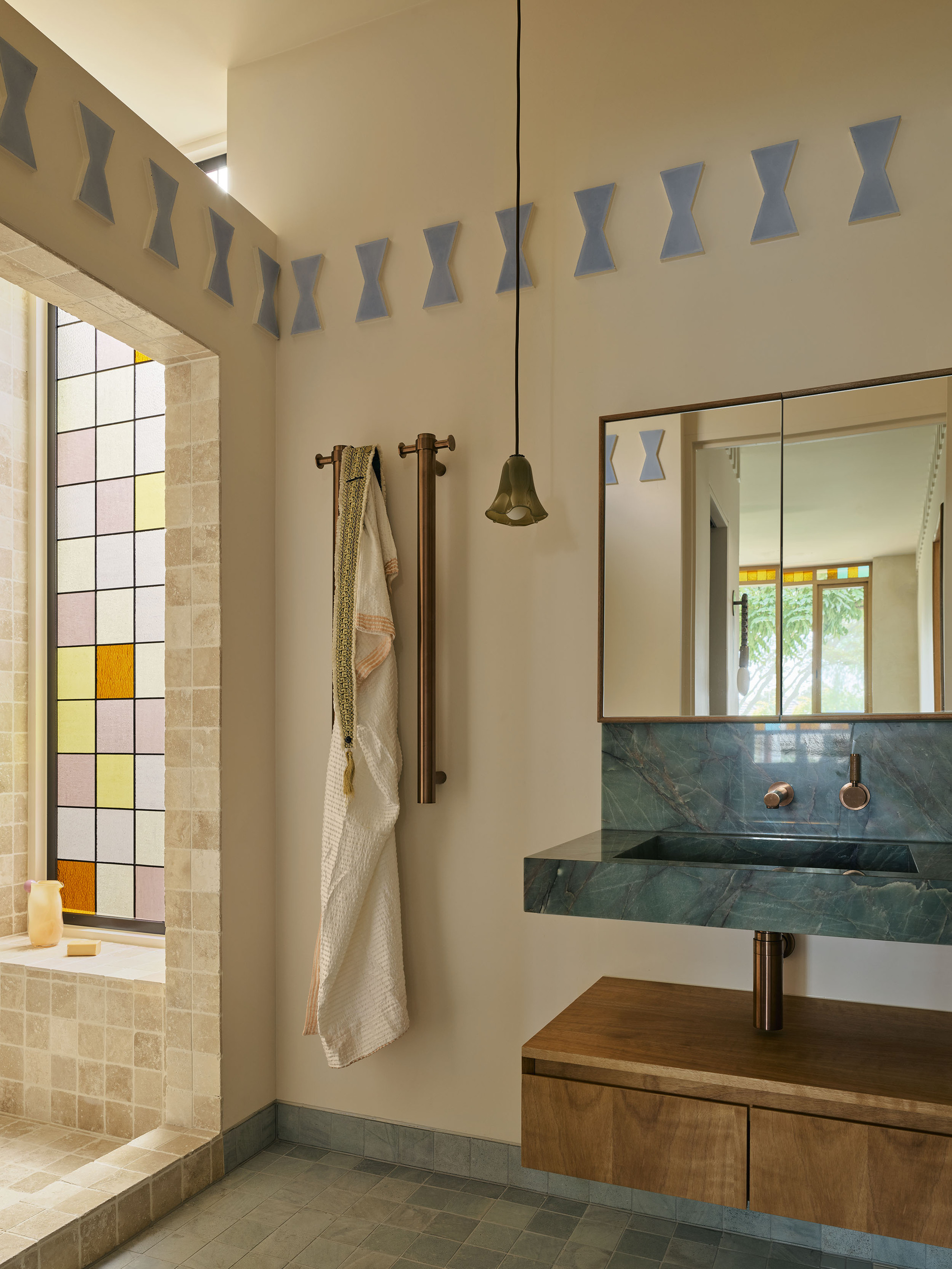
2. Play With Leftover Paint

Another modern way to approach ceiling trim is also perhaps the simplest: paint.
"Instead of being limited to traditional wood profiles, paint lets you 'draw' the trim through borders, stripes, or even tonal shifts that frame the ceiling," interior designer Nicole Roe of R. Nickson Interiors tells me. "Patterns or color variations can highlight the ceiling as the fifth wall without adding physical ornamentation. It’s a more flexible, modern take that keeps the detail graphic and intentional."
This could easily be achieved with a bit of leftover paint, reducing waste and helping tie together your home's color palette. When it comes to hand-painted trims, Evgeny Shevchenko, co-director of design studio LakeandWalls, says, "Elongated, horizontal lines work best in modern architecture, stretching and opening up the space."
3. Opt For Unexpected Materials
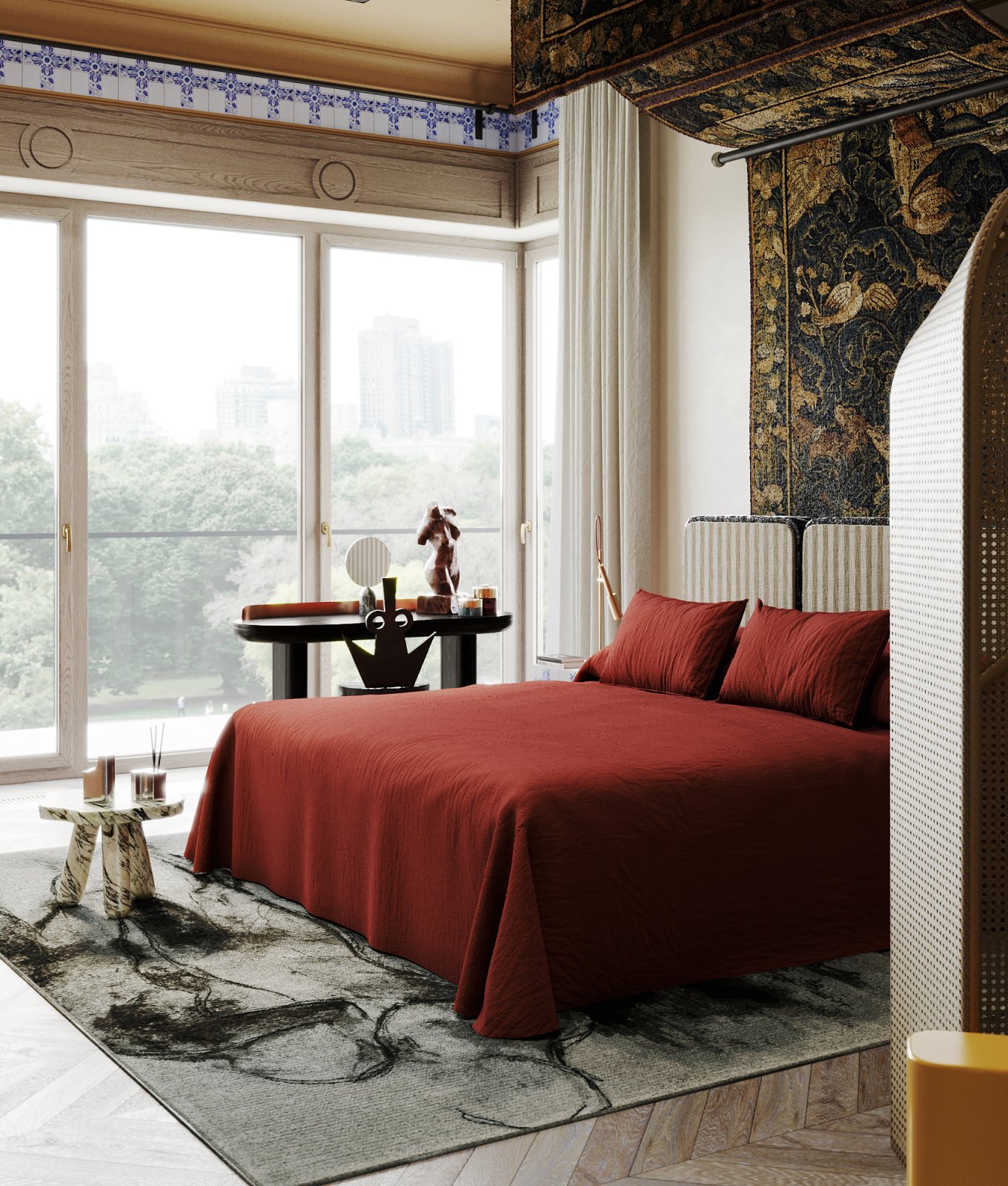
There is something innately 'modern' about using unexpected materials, and the same goes for ceiling trim. While this bedroom does feature a more traditional trim, what caught my eye was actually the decorative blue and white tile that borders it.
The space's designers, Evgeny Shevchenko and Oksana Zavarzina, agree, adding that unexpected materials are often what make trim feel more contemporary. "Metal, matte plastic, colored glass, or textured plaster can give time a 'reimagined classic' quality," they share. "And using moldings as strict squares, stripes, or asymmetrical compositions feels architectural rather than ornamental."
4. Bobbin
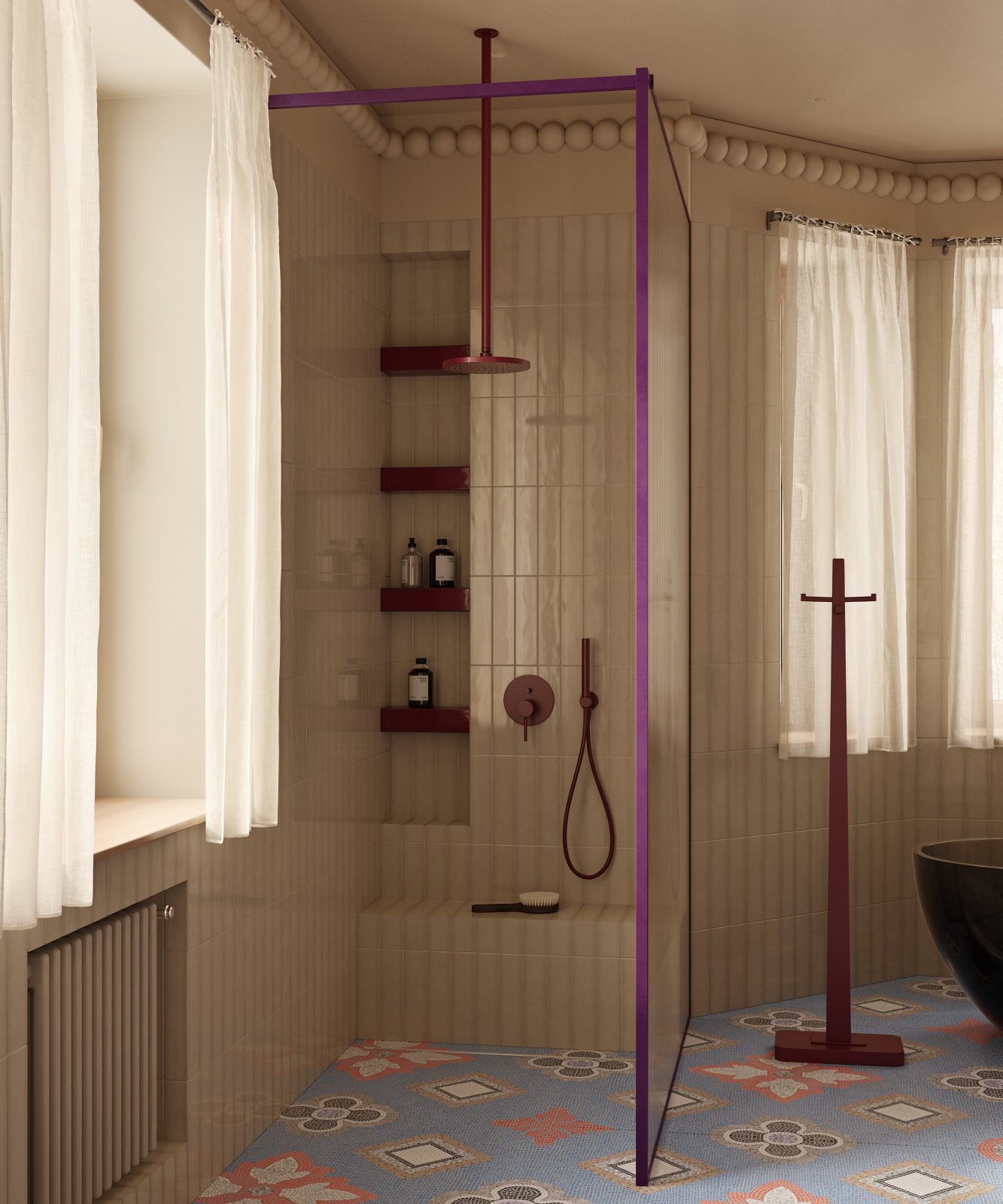
If trends have taught us anything lately, it's that you can't go wrong with bobbin details anywhere in your home. But what about as a ceiling trim? Livingetc's very own global brand director and group editor-in-chief, Sarah Spiteri, is on board with the look, having installed it in two bedrooms in her home.
"I see ceiling trims as the quiet detail that completely changes a room, a bit like the final accessory to a tailored outfit," she tells me. "They frame the space, giving it definition, and they absolutely don’t have to feel traditional. I went for a bobbin trim to bring a playful touch and keep the look fresh while still delivering that all-important sense of completion."
5. Reimagine, Don't Replicate

Being able to make ceiling trims feel appropriate in a modern space often comes down to really understanding what makes it an enhancement and what's just excessive.
"It enhances when it supports the rhythm and proportions of the room, softens transitions, and visually connects the ceiling to the walls or built-in volumes," explains Evgeny Shevchenko, who notes how the pink trim in the green bedroom above works as a playful graphic element, rather than faux-classicism.
But, it can feel excessive, "When ornamentation or molding stands alone, disconnected from the design story," Evgeny adds. "Then it feels like a decorative afterthought, an attempt to 'add character' without a clear system."
FAQs
How Can Scale, Proportion, or Finish Make Ceiling Trim Feel More Modern?
So, we've established that you absolutely can and should add ceiling trims to modern homes, so long as you choose the right style. While the ideas above demonstrate that, I wanted to dig even deeper, looking at how scale, proportion, and finish come into play.
Turns out, trims with straighter, sharper edges tend to look better in this context. "Thinner, lighter profiles immediately look more contemporary," adds Oksana Zavarzina, co-director of LakeandWalls.
"Reducing depth and weight removes heaviness, while matte surfaces, strong colors, or monochrome treatments look far fresher than traditional white plasterwork," she adds.
Interior designer Nicole Roe agrees that scale, proportion, and finish can completely shift how trim reads in a space, adding that one of the most modern finishes is tone-on-tone. "Painting it the same color as the walls or ceiling creates depth and shadow without feeling fussy," she says. "It reads as architectural rather than decorative."
When it comes to scale, she echoes Oksana and says to go slim. "Choosing slimmer, more refined profiles instead of the oversized, ornate mouldings of the past allows trim to enhance a modern home without tipping into pastiche."
When Shouldn't You Use Ceiling Trim in a Modern Home?
But, of course, it's not a fair fight unless you hear out the other side, and there certainly are instances when ceiling trim just doesn't work in a modern home.
Consider the dimensions of your room. It can often feel lost in larger, open-plan spaces, and can also make low ceilings feel even lower and heavier. Alternatively, slanted or highly sculptural ceiling treatments such as coffered designs, exposed beams, or even wallpaper can also make ceiling trim feel confused, cluttered, and disruptive.
"If there’s already a lot happening at eye level, or if the ceilings are exceptionally tall, trim can quickly shift from accent to overkill," says Nicole Roe. "It’s all about balance and knowing when a detail is elevating the space versus competing with it."
So, that settles it. You can put ceiling trim in a modern space, but the key is intention. "In a contemporary setting, trim should have a purpose: it should tell a story, complement the architecture, and feel like a considered design choice rather than an afterthought," says Nicole Roe.
And as for the next debate to discuss: is there such a thing as modern pelmet ideas? Let's find out.







